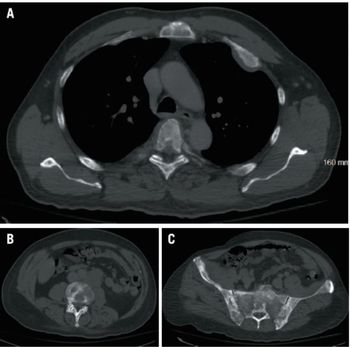
In this case, we examine a 49-year-old man with widespread metastatic sclerotic bone lesions. What is your diagnosis?

Your AI-Trained Oncology Knowledge Connection!


In this case, we examine a 49-year-old man with widespread metastatic sclerotic bone lesions. What is your diagnosis?
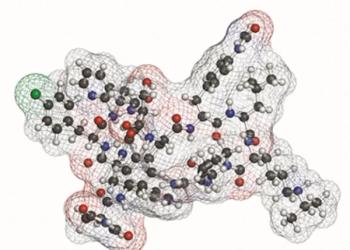
This article reviews the mechanism of action between GnRH agonists and antagonists and the studies that led to the approval of degarelix, as well as its potential risks and benefits, particularly when it comes to cardiovascular health.

In this side of the Point/Counterpoint, Drs. Bernard and Flaig state that genomic testing should be routine in the management of prostate cancer patients.

In this side of the Point/Counterpoint, Drs. Kelly and Knudsen state that limitations exist for guiding therapeutic treatment with genomic testing in prostate cancer patients.
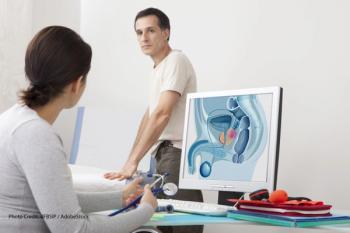
A recent study in JAMA Oncology compared survival for various multi-modality approaches for treating aggressive prostate cancer.
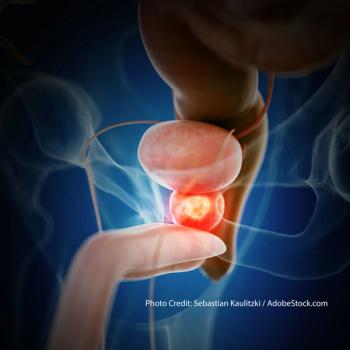
Researchers examined whether a higher Gleason score impacts the efficacy of androgen deprivation therapy.

In this article, we discuss the importance of assessing frail and elderly prostate cancer patients before starting treatment and making adjustments to the choice of therapy, or supportive services, in order to maximize benefit and minimize potential harms.
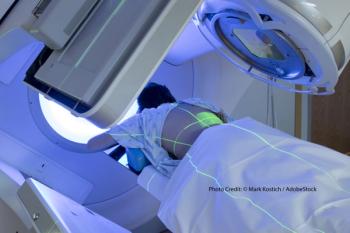
The findings of this study, recently published in JAMA Oncology, directly contradict previously conducted research on the same topic.
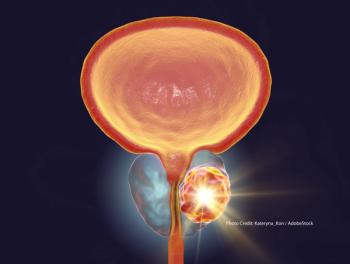
Oncologists now have some clarification on the use of moderate hypofractionation and ultrahypofractionation from ASTRO, ASCO, and the AUA.

Treatment for prostate cancer with external beam radiotherapy was found to be associated with an increased risk for development of bladder cancer when compared with radical prostatectomy.
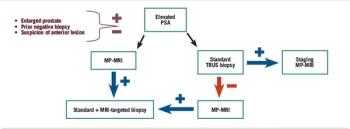
This article summarizes the current role of multiparametric MRI in the diagnosis, risk assessment, and treatment of prostate cancer.
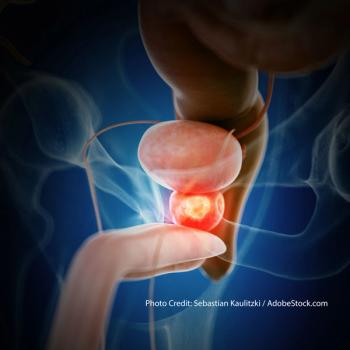
New research in Lancet Oncology confirms previous studies in this population on the addition of apalutamide to androgen deprivation therapy.
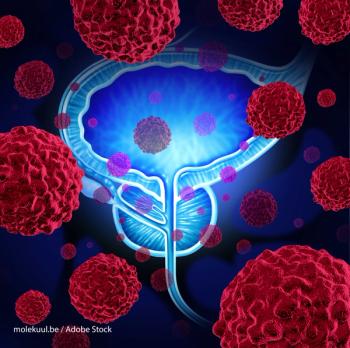
A study in Cancer found a lower risk of prostate cancer–specific death and improved overall survival when patients were treated with this combination.

By elevating the expression of ANO7, a potential prostate cancer susceptibility gene, it may be possible to predict disease severity and outcome.

This article summarizes the key side effects associated with ADT for the treatment of prostate cancer and discusses strategies to optimize management.
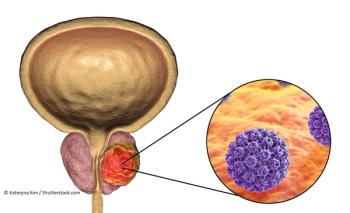
A particular gatekeeper-the nuclear pore protein called POM121-traffics molecules that increase tumor aggressiveness in prostate cancer.

Small-cell neuroendocrine disease associated with prostate cancer treatment appears to be more common than previously believed.
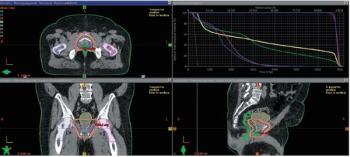
A 62-year-old man with prostate adenocarcinoma elected to proceed with radical prostatectomy as definitive management. After his pathology report showed stage IIIB disease, he elected for observation. What happened next?

DNA and RNA sequencing results suggest prostate cancer treatment “involving inhibition of CDK12 and immune checkpoint blockade,” a U Michigan team said.

A large genomic analysis identified more than 60 new prostate cancer susceptibility loci, including one locus significantly associated with early onset.

A multicenter, international phase II study found higher-dose and extended-dose therapy with Ra-223 did not improve survival or pain scores.

Here we focus on alternative methods of harnessing both adaptive and innate antitumor immunity to target prostate cancer cells, and look ahead to provide a perspective on how this growing collection of immunotherapeutic approaches may ultimately be combined to target prostate cancer from a variety of angles.

The combination of the PARP inhibitor olaparib and abiraterone offered improved efficacy in patients with metastatic castration-resistant prostate cancer, but at what cost?

In SPCG-13, adjuvant docetaxel without prednisone did not impact biochemical DFS in intermediate- or high-risk disease treated with radical RT with ADT.

OS with the PSA-targeted, poxvirus-based cancer vaccine was no better than placebo, and increased survival was attributed to better standard of care.